Marketing Strategy
Feb 16, 2024
By Ari Manor , CEO at ZOOZ

This is one in a series of articles that provide detailed and updated information about Marketing. In this specific article, which focuses on Marketing Strategy, you can read about:
- Marketing Strategy
- What are the 5 Common Marketing Strategies?
- Which Marketing Strategy is Most Effective
- USP
- Branding
- Marketing Mix and the 7 P's of Marketing
- Marketing Umbrella
- Marketing Plan
- How to Make a Marketing Plan?
- Segmentation
For additional articles about Marketing, see the Topic Menu.

Marketing Strategy
A marketing strategy is a comprehensive plan formulated by a business to achieve specific organizational objectives. It outlines how the company will reach its target market, convert potential customers into actual customers, and retain them. A sound marketing strategy is backed by careful research and a thorough understanding of your market, competitors, and customers. Here’s how to develop an effective marketing strategy:
- Market Research: Conduct detailed market research to understand the industry landscape, your competition, and your target audience's needs, preferences, and behaviors.
- Define Business Goals: Clearly define what your business aims to achieve through its marketing efforts, such as increasing brand awareness, growing market share, or boosting sales.
- Identify Target Audience: Determine who your ideal customers are. Segment your market to target specific groups effectively, tailoring your marketing messages to their unique characteristics.
 Case Study:
Case Study:
Local Libations’ Craft Beer Community Focus- Company: Local Libations, Midwest USA (Established 2015)
- What Was Done: This small craft brewery developed a hyper-local marketing strategy, emphasizing its local roots and community involvement. They engaged customers by hosting local events, collaborating with other local businesses, and sourcing ingredients from regional farms.
- Results/Impact: Local Libations created a loyal customer base within its community, with a 25% increase in sales within two years, illustrating the effectiveness of a community-focused marketing strategy for small businesses.
- Unique Value Proposition (UVP): Articulate what makes your product or service unique and why customers should choose you over your competitors.
 Case Study: Greener Gadgets’ Eco-Friendly Approach
Case Study: Greener Gadgets’ Eco-Friendly Approach- Company: Greener Gadgets, Scandinavia (Established 2009)
- What Was Done: Greener Gadgets implemented a marketing strategy centered on eco-innovation and sustainability. They marketed their electronics as not only technologically advanced but also designed with a minimal environmental footprint.
- Results/Impact: The company became a niche leader in sustainable electronics, experiencing a 15% year-on-year growth and expanding its market share in the environmentally conscious consumer segment.
- Positioning: Decide how you want to position your brand in the minds of your customers. Your positioning should align with your UVP and be consistently communicated across all channels.
 Case Study: Ritual's Holistic Health Approach
Case Study: Ritual's Holistic Health Approach- Company: Ritual, United States (Founded in 2016)
- What Was Done: Their direct-to-consumer model leveraged influencer partnerships and educational content to convey the science behind their products.
- Results/Impact: Ritual successfully carved out a niche in the crowded supplement market, securing over $40 million in funding by 2019 and establishing a strong, loyal customer base focused on health and wellness.
- Marketing Mix (4 Ps): Plan your product, price, place, and promotion strategies—also known as the 4 Ps. These are the key elements you'll manipulate to reach your market and achieve your business goals.
- Budget Planning: Allocate your marketing budget based on your business goals and the tactics you plan to use. Be strategic about where you invest your resources for the best return on your investment.
- Choose Marketing Channels: Select the marketing channels that will best reach your target audience. Consider a mix of traditional and digital marketing tactics based on where your audience spends their time.
- Content Strategy: Develop a content strategy that provides valuable information to your audience, establishes your authority, and drives engagement.
- Action Plan and Timelines: Develop a detailed action plan with timelines for implementing your marketing strategy. This should outline what will be done, by whom, and when.
- Measurement and KPIs: Identify key performance indicators (KPIs) to measure the success of your marketing activities. Regularly review these metrics to assess performance and make adjustments as needed.
- Continuous Improvement: Be prepared to adapt your strategy based on feedback and performance data. The market is always changing, and flexibility can be a key advantage.
An effective marketing strategy is a roadmap for business success, guiding marketing efforts to ensure they align with business objectives. It provides a framework for making informed decisions and measuring progress toward achieving your goals.

What are the 5 Common Marketing Strategies?
The five common marketing strategies widely recognized in the marketing industry are:
- Product Differentiation Strategy (Added-Value): This strategy involves distinguishing your products or services from competitors in aspects like quality, features, design, or customer service. The goal is to highlight the unique selling propositions (USPs) that make your offerings stand out in the marketplace.
 Case Study: Beanie's Boutique Bean Roastery
Case Study: Beanie's Boutique Bean Roastery- Company: Beanie's Boutique, New England, USA (Established 2013)
- What Was Done: Beanie's employed five key marketing strategies: product differentiation (specialty bean blends), price competitiveness (affordable luxury), placement (local farmers' markets and online sales), promotion (social media giveaways), and people (exceptional customer service).
- Results/Impact: The boutique saw a 40% increase in sales within 18 months and established a solid brand presence in the local coffee enthusiast community.
- Cost Leadership Strategy (Lowest prices): This approach focuses on becoming the lowest-cost producer in the industry. The company with the lowest costs can offer products at the lowest prices, appealing to cost-conscious customers, or maintain average prices to enjoy a higher profit margin.
- Niche Marketing Strategy: Niche marketing targets a specific, well-defined segment of the market. By focusing on a niche, a business can tailor its products and marketing efforts to meet the unique needs of that particular group better than competitors targeting a broader audience.
- Innovation Strategy: Companies that consistently innovate tend to stay ahead in the market. This strategy is about being the first to introduce new products, features, or technologies, thus capitalizing on the market's novelty and setting industry trends.
 Case Study: Netflix's Data-Driven Content Marketing
Case Study: Netflix's Data-Driven Content Marketing- Company: Netflix, Global (Founded in 1997)
- What Was Done: Netflix employed a content marketing strategy informed by user data to drive its original content creation. By analyzing viewing habits, they were able to produce shows and films that catered to the tastes of their diverse subscriber base.
- Results/Impact: This strategy resulted in high viewer engagement and retention, with Netflix surpassing 200 million subscribers in 2020. Their success in original content has also led to numerous awards, setting the company apart in the competitive streaming service industry.
- Customer Relationship Strategy: This strategy is centered on building long-term relationships with customers. It involves engagement through loyalty programs, personalized communication, exceptional customer service, and efforts to increase customer satisfaction and retention.
- Mutual Dependency Strategy (a sub-type): A strategy where businesses and customers rely on each other for success, emphasizing cooperative relationships that enhance value for both parties and foster long-term loyalty. Usually, in this case, the providing business works with only a few big clients, and devices a distinguished tailored solution to each client.
 Case Study: Minaal's Crowdfunding Campaign Success
Case Study: Minaal's Crowdfunding Campaign Success
- Company: Minaal, New Zealand (Founded in 2013)
- What Was Done: Minaal used crowdfunding on Kickstarter to launch its durable, travel-focused backpacks. They utilized a mix of marketing strategies including social proof, scarcity (limited time offers), and community building to exceed their funding goals.
- Results/Impact: Their initial campaign raised over $340,000, far surpassing their goal of $30,000. This success helped establish Minaal as a credible and customer-focused brand in the travel gear market.
These strategies can be implemented individually or combined, depending on the company's goals, resources, market conditions, and the behavior of its target consumers. A unique case for combining strategies is the Blue Ocean Strategy, which offers extreme added-value for a major benefit of the offering, while minimizing solution components that are not related to this benefit. For example, offering a high end university, with top global lecturers, but virtual and without physical location. This strategy can be regarded as a combination of three strategies – Added-Value, Cost Leadership and Innovation strategies.

Which Marketing Strategy is Most Effective
Determining the most effective marketing strategy depends on a range of factors, including the type of business, target audience, market conditions, competitive landscape, and available resources. There isn't a one-size-fits-all answer, as what works for one business might not work for another. However, many businesses find success with a combination of the following approaches:
- Customer-Centric Strategy: Focusing on the customer experience at every stage of the buying process tends to yield positive results. By understanding and meeting the needs and preferences of the customer, businesses can increase satisfaction, loyalty, and word-of-mouth referrals.
 Case Study:
Case Study:
Apple's Differentiation Through Design and Innovation- Company: Apple Inc., Global (Founded in 1976)
- What Was Done: Apple has consistently applied a differentiation strategy focusing on innovative design and user experience. This approach is evident from their product development to their marketing campaigns.
- Results/Impact: Apple’s commitment to this strategy has made it one of the most successful and profitable companies globally. It has cultivated a strong brand loyalty, with Apple becoming the first U.S. company to reach a market value of over $2 trillion in August 2020.
- Content Marketing Strategy: Providing valuable, relevant content can attract and retain a clearly defined audience, ultimately driving profitable customer action. It's effective for building trust, credibility, and authority in your industry.
- Digital Marketing Strategy: With the increasing amount of time consumers spend online, digital marketing strategies, including SEO, social media marketing, and email marketing, have become highly effective in reaching and engaging target audiences.
 Case Study: Slack's Focus on Viral Marketing
Case Study: Slack's Focus on Viral Marketing- Company: Slack Technologies, Inc., United States (Founded in 2009)
- What Was Done: Slack utilized a viral marketing strategy by focusing on word-of-mouth and organic growth. They created a product that encouraged team communication and collaboration, making it inherently shareable within and across work teams.
- Results/Impact: Slack’s strategy proved highly effective as they experienced exponential growth. By 2014, just after the public release, Slack reported over 16,000 users, which grew to over 12 million daily active users by the end of 2020.
- Inbound Marketing Strategy: Attracting customers through content and interactions that are helpful and add value, rather than interruptive, is a core component of inbound marketing. It aligns with how consumers today prefer to learn about and choose products.
 Case Study: Glossier's Community-Driven Growth
Case Study: Glossier's Community-Driven Growth- Company: Glossier, United States (Founded in 2014)
- What Was Done: Glossier adopted a community-driven marketing strategy, emphasizing user-generated content and word-of-mouth. They actively engaged with their audience on social media, which helped shape product development and build brand advocacy.
- Results/Impact: This approach fostered a dedicated fan base and propelled Glossier to unicorn status with a $1.2 billion valuation in 2019.
- Integrated Marketing Strategy: A cohesive strategy that ensures all messaging and communication strategies are unified across all channels and are centered around the customer provides a consistent brand experience, which can be highly effective.
The effectiveness of a marketing strategy also hinges on its implementation, including the quality of execution, consistency, and how well it's adapted over time to respond to changes in the market and consumer behavior. Continuous testing, measurement, and optimization are key to finding the most effective strategy for any given business.

USP
Unique Selling Proposition (USP) refers to the distinct advantage or benefit that sets a product, service, or brand apart from its competitors. It's a specific feature or value that makes a company's offering unique and desirable to its target market, compelling enough to influence the consumer's purchasing decision. The concept of USP is crucial in marketing strategies as it highlights why a customer should choose one product over another in a competitive marketplace.
Here’s a deeper look into USP and its significance in marketing:
Importance of USP
- Differentiation: A well-defined USP helps a product or brand stand out in a crowded market, highlighting its unique characteristics.
- Customer Attraction: It captures the attention of potential customers by addressing their specific needs or desires that competitors may not fulfill.
- Brand Loyalty: A strong USP can foster brand loyalty by consistently delivering on the unique value promised to customers.
- Marketing Focus: It provides a clear focus for all marketing and advertising efforts, ensuring that messaging is consistent and impactful.
Developing a USP
- Identify Target Market Needs: Understand the needs, wants, and pain points of your target market through market research.
- Analyze Competitors: Evaluate the offerings and USPs of your competitors to find gaps or areas for improvement.
- Highlight Unique Features: Identify features of your product or service that are unique to your business and highly valued by your target market.
 Case Study:
Case Study:
ClearView Solar Glass Innovates with Transparency- Company: ClearVue Technologies, Perth, Australia
- What Was Done: ClearView Technologies developed a unique selling proposition by combining energy efficiency with aesthetic appeal in their solar glass panels, allowing homeowners to generate solar power without the need for traditional panels.
- Results/Impact: The USP of aesthetic, efficient energy generation that pays for itself, allowed ClearView to stand out in the renewable energy market, securing several high-profile installation projects and partnerships with eco-conscious architecture firms. The company’s innovation led to a doubling of sales inquiries within a year.
- Articulate Benefits: Translate these unique features into tangible benefits for the customer.
- Simplify and Communicate: Develop a simple, clear, and concise statement that communicates your USP to customers.
Examples of USP
- Domino’s Pizza: “You get fresh, hot pizza delivered to your door in 30 minutes or less—or it's free.”
- Gillette: “The best a man can get.”
- M&M's: “The milk chocolate melts in your mouth, not in your hand.”
- Rolls-Royce: “Strive for Perfection in Everything You Do.”
- The Economist: “Arm yourself with understanding.”
- FedEx: “When it absolutely, positively has to be there overnight.”
- LinkedIn: “Connect to opportunity.”
Challenges in Establishing a USP
- Innovation and Imitation: Maintaining a unique position when competitors attempt to imitate your USP.
- Evolving Consumer Preferences: Adapting your USP to changing market conditions and consumer preferences.
- Ensuring Relevance: Continually ensuring that your USP remains relevant and compelling to your target audience.
The Future of USP
- In an ever-evolving marketplace, the concept of USP is also shifting towards creating a Unique Value Proposition (UVP), which not only emphasizes product uniqueness but also focuses on the deep value and experience offered to customers. This includes personalization, customer experience, and emotional connection, which are becoming increasingly important in differentiating brands in the digital age.
 Case Study: HelloFresh's Unique Selling Proposition
Case Study: HelloFresh's Unique Selling Proposition
- Company: HelloFresh, Berlin, Germany (Established in 2011)
- What Was Done: HelloFresh leveraged its unique selling proposition (USP), “America’s most popular meal kit,” to establish itself as a leader in the meal kit subscription market. This USP focuses on social proof and the fear of missing out (FOMO) to attract and retain customers. By declaring itself the most popular meal kit in the country, HelloFresh taps into the psychological appeal of popularity and trust. The company supports this claim with additional statements on its website, emphasizing the benefits of its meal kits: saving money, time, and stress in meal preparation. HelloFresh offers a variety of subscription boxes, including fresh produce, meat products, bulk fish, and dairy, catering to diverse customer needs.
- What Was Done: HelloFresh leveraged its unique selling proposition (USP), “America’s most popular meal kit,” to establish itself as a leader in the meal kit subscription market. This USP focuses on social proof and the fear of missing out (FOMO) to attract and retain customers.
- Solution: By declaring itself the most popular meal kit in the country, HelloFresh taps into the psychological appeal of popularity and trust. The company supports this claim with additional statements on its website, emphasizing the benefits of its meal kits: saving money, time, and stress in meal preparation. HelloFresh offers a variety of subscription boxes, including fresh produce, meat products, bulk fish, and dairy, catering to diverse customer needs.
- Results/Impact: The strategic use of its USP has helped HelloFresh build a robust customer base and maintain its market leadership. By effectively communicating the value and convenience of its service, HelloFresh attracts customers who are looking for easy, cost-effective meal solutions. The focus on popularity and social proof has driven customer interest and engagement, reinforcing the brand's position as a trusted meal kit provider.
- Key Takeaway: HelloFresh’s use of a compelling USP highlights the effectiveness of leveraging social proof and FOMO in marketing. By clearly communicating the benefits and backing up its claims, HelloFresh has successfully positioned itself as the leading meal kit service in the US. This case study demonstrates the importance of a strong, well-supported USP in attracting and retaining customers in a competitive market.
In summary, a Unique Selling Proposition is a critical element of a brand's identity and marketing strategy. It serves as the foundation of a brand's message and positioning in the market, aiming to capture the customer's interest and differentiate the brand from its competitors. Crafting a compelling USP requires a deep understanding of both the target market's needs and the competitive landscape, ensuring that the brand can deliver on its unique promise.
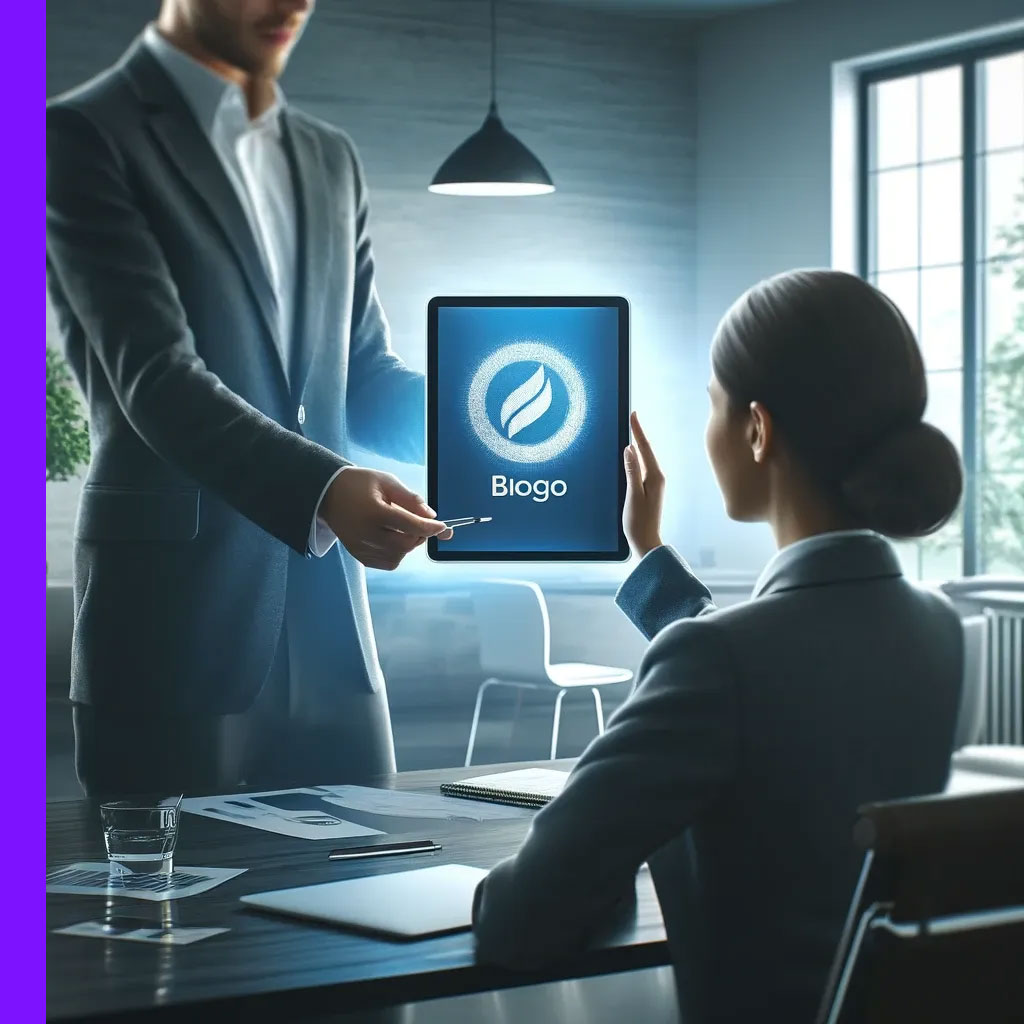
Branding
Branding is a strategic marketing practice focused on creating a distinctive name, symbol, or design that identifies and differentiates a product or service from its competitors. At its core, branding is about crafting a deep connection with consumers, instilling an emotional resonance, and building a lasting relationship based on trust, loyalty, and perceived value.
Here’s a comprehensive overview of branding and its crucial components:
Objectives of Branding
- Identity Creation: Establishing a unique brand identity that reflects the company’s values, mission, and the benefits of its products or services.
 Case Study: Slack’s Distinctive Brand Identity
Case Study: Slack’s Distinctive Brand Identity- Company: Slack Technologies
- What Was Done: From its launch, Slack focused on building a distinctive brand identity that reflected simplicity, collaboration, and a slight quirkiness, distinguishing itself in the crowded messaging and collaboration software market. Its branding efforts included a memorable logo, a cohesive visual style, and a tone of voice that communicated both professionalism and approachability.
- Results/Impact: Slack’s strong brand identity contributed to its rapid adoption and fervent user base, leading to significant growth in user numbers and widespread recognition as a leading tool for workplace communication and collaboration. This strong identity helped Slack maintain a competitive edge and build a loyal community of users.
- Differentiation: Setting the brand apart from competitors in the market to avoid commoditization.
- Customer Loyalty: Encouraging repeat business and fostering a loyal customer base by consistently delivering value.
- Brand Equity: Enhancing the perceived value of the brand, which can allow for premium pricing and greater market share.
Key Components of Branding
- Brand Name and Logo: The visual and verbal elements that form the first impression of the brand.
- Brand Personality: Human characteristics attributed to the brand, shaping how consumers relate to it emotionally.
- Brand Voice: The consistent tone and style of communication used across all marketing channels.
- Brand Positioning: The strategic process of defining where the brand stands in the marketplace relative to competitors.
- Brand Promise: The commitment made to customers, encapsulating the experience they can expect from the brand’s products or services.
 Case Study: GadgetFlow's Rebrand Elevates Tech Curation
Case Study: GadgetFlow's Rebrand Elevates Tech Curation
- Company: GadgetFlow, a platform curating the latest tech gadgets and innovations
- What Was Done: GadgetFlow underwent a comprehensive rebranding to position itself as the go-to source for discovering cutting-edge tech products. The rebrand included a new logo, website redesign, and enhanced content strategy focusing on in-depth product reviews and tech trends.
- Results/Impact: The rebranding effort reinvigorated the platform's user engagement, resulting in a 40% increase in daily visitors and a significant boost in subscription rates for their premium product discovery service. GadgetFlow's success story underscores the value of a strong brand identity in differentiating within a crowded market space.
Strategies for Effective Branding
- Consistency: Ensuring uniformity in messaging, visuals, and experiences across all customer touchpoints to reinforce the brand identity.
- Emotional Connection: Crafting marketing messages that resonate on an emotional level with the target audience, building brand loyalty.
- Customer Experience: Providing exceptional service and experiences that exceed customer expectations, solidifying the brand’s reputation.
 Case Study: Airbnb’s “Belong Anywhere” Rebranding
Case Study: Airbnb’s “Belong Anywhere” Rebranding- Company: Airbnb
- What Was Done: Airbnb underwent a major rebranding effort with its “Belong Anywhere” campaign, which aimed to position the company not just as a booking platform but as a facilitator of unique travel experiences where people can feel a sense of belonging.
- Results/Impact: This rebranding strengthened Airbnb’s market position, differentiating it from traditional hospitality services by emphasizing personal connections and experiences. It contributed to a surge in bookings and global expansion, showcasing the effectiveness of branding that resonates with core human values and desires.
- Storytelling: Utilizing narrative techniques to convey the brand’s values, history, and mission, making it more relatable and memorable.
 Case Study: Wildflower Herbals' Branding Blossoms
Case Study: Wildflower Herbals' Branding Blossoms- Company: Wildflower Herbals, a boutique producer of herbal skincare products
- What Was Done: Wildflower Herbals developed a distinctive brand identity centered around its use of natural, locally-sourced ingredients. The branding strategy encompassed unique packaging, a compelling brand story communicated through their website and social media, and engagement with their community at local farmers' markets.
- Results/Impact: The company's focus on storytelling and community engagement established Wildflower Herbals as a trusted, authentic brand within the herbal skincare market, doubling its online sales and expanding its product placement into regional health stores and spas within a year.
Challenges in Branding
- Market Saturation: Standing out in a crowded market where consumers are bombarded with choices.
- Consistency Across Channels: Maintaining brand consistency across diverse and evolving digital platforms.
- Adapting to Changing Consumer Preferences: Keeping the brand relevant in the face of shifting market trends and consumer behaviors.
The Future of Branding
- The future of branding lies in leveraging technology to create more personalized, interactive brand experiences. Brands will increasingly use data analytics, AI, and augmented reality to engage consumers in innovative ways, predict trends, and deliver tailored solutions that meet individual needs and preferences.
In summary, branding is more than just a logo or a tagline; it's a comprehensive strategy that encompasses every aspect of how a company presents itself to the world. Effective branding requires a deep understanding of the target audience, a clear vision of the brand’s identity and values, and a commitment to delivering consistent, high-quality experiences. By focusing on these elements, companies can build strong brands that resonate with consumers, differentiate themselves in the marketplace, and achieve long-term success.

Marketing Mix and the 7 P's of Marketing
The marketing mix, traditionally known as the 4 Ps of marketing—Product, Price, Place, and Promotion—has been extended in the modern marketing landscape to include three additional Ps: People, Process, and Physical Evidence. This expanded framework, the 7 Ps of Marketing, offers a more comprehensive strategy for meeting customer needs and achieving competitive advantage. Here's a breakdown:
- Product: Focuses on the goods or services offered to meet customer needs. This includes quality, design, features, branding, and packaging. The product must solve a real problem or fulfill a desire to succeed in the market.
- Price: Involves the pricing strategy for products or services, considering factors like cost, perceived value, competition, and market demand. Pricing decisions impact profitability, market positioning, and customer perceptions.
- Place: Refers to how and where products are sold, encompassing market geographies, distribution channels, market coverage, retail location, and online platforms. The goal is to make products available in locations convenient and desirable to the target market.
 Case Study: IKEA’s Product Placement Perfection
Case Study: IKEA’s Product Placement Perfection- Company: IKEA, Global (Founded in 1943)
- What Was Done: IKEA expertly executed the 7 P's of marketing by offering a wide range of well-designed, functional home furnishings at low prices. They focused on the in-store experience (place), had efficient customer service processes, and employed promotional strategies that highlighted the brand’s unique value.
- Results/Impact: IKEA's application of the marketing mix helped it become the world’s largest furniture retailer, with an annual turnover of over €39 billion in 2020, a testament to the company's comprehensive understanding of marketing fundamentals.
- Promotion: Encompasses all strategies to communicate the value of the product to the target audience, including advertising, sales promotions, public relations, and digital marketing. Effective promotion increases visibility and drives demand.
- People: Recognizes the importance of everyone involved in the business, from employees to customers. Training, customer service, and the overall customer experience are crucial elements that influence perceptions and brand loyalty.
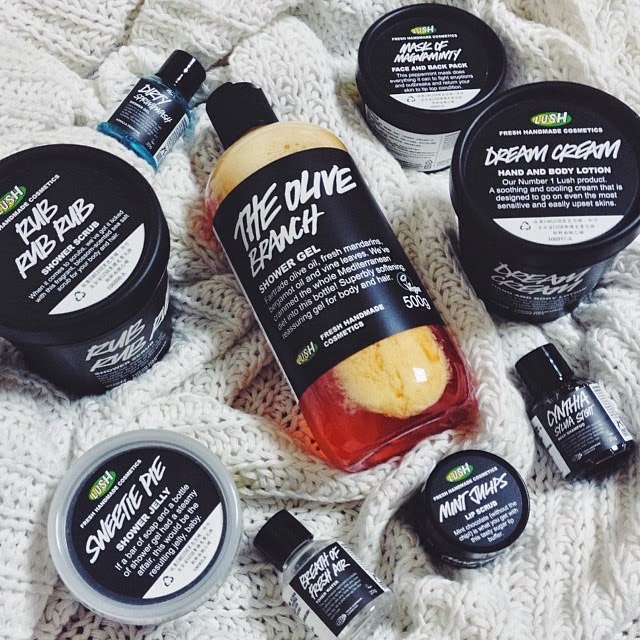 Case Study: Lush’s Handmade Marketing Mix Mastery
Case Study: Lush’s Handmade Marketing Mix Mastery- Company: Lush Fresh Handmade Cosmetics, United Kingdom (Founded in 1995)
- What Was Done: Lush’s marketing mix focused on product, place, and people, with handmade cosmetics, a strong ethical message, in-store customer experiences, and a passionate, knowledgeable workforce.
- Results/Impact: This approach has differentiated Lush in the cosmetics industry, resulting in a strong customer base with over 951 stores globally. Their ethical marketing has fostered customer loyalty and allowed them to command premium pricing for their products.
- Process: Refers to the procedures, mechanisms, and flow of activities by which services are consumed. This includes the customer journey, service delivery methods, and the efficiency of operations. A smooth, user-friendly process enhances customer satisfaction.
- Physical Evidence: The tangible aspects that customers encounter during their experience with a service, including the physical environment, packaging, and branding materials. Physical evidence supports the service’s quality and helps shape customer perceptions.
The 7 Ps framework provides a comprehensive approach to marketing strategy, ensuring that companies consider all aspects of their offering and how they interact with the customer. By carefully evaluating and optimizing each component, businesses can effectively meet customer needs, stand out in the market, and achieve sustainable growth.

Marketing Umbrella
The term "Marketing Umbrella" is often used metaphorically to describe the broad range of activities, strategies, tools, and channels that fall within the realm of marketing. It encompasses everything a company does to promote its products or services and engage with customers.
 Case Study: EcoEssentials’ Integrated Marketing Approach
Case Study: EcoEssentials’ Integrated Marketing Approach
- Company: Eco Essentials, a provider of sustainable living products, Australia
- What Was Done: Eco Essentials executed an integrated marketing strategy under the “Sustainable Living Made Easy” umbrella. This cohesive approach included social media campaigns, educational content, partnerships with eco-conscious influencers, and community recycling events, all promoting the ease of transitioning to a sustainable lifestyle.
- Results/Impact: The umbrella marketing strategy effectively increased brand awareness and sales by 45% within a year, demonstrating how a unified message across channels can amplify marketing impact.
Here's a more detailed overview of what might be included under the marketing umbrella:
Components Under the Marketing Umbrella
- Market Research: The process of gathering, analyzing, and interpreting information about a market, including information about consumers and competitors.
- Product Marketing: Focuses on driving demand and adoption of a product by highlighting its features and benefits.
- Brand Management: Involves developing and maintaining a brand's identity, values, and overall image.
- Advertising: The paid promotion of products or services through various media channels to reach a target audience.
- Public Relations (PR): Managing the public perception of a company and building relationships with the audience through media and community relations.
- Content Marketing: Creating and distributing valuable, relevant content to attract and retain a clearly defined audience.
- Social Media Marketing: Using social platforms to connect with audiences, enhance brand visibility, and promote products.
- Digital Marketing: Online marketing efforts including SEO, PPC, email marketing, and mobile marketing.
- Sales Promotion: Short-term incentives to encourage the purchase or sale of a product or service.
- Event Marketing: Engaging with customers and prospects through events such as trade shows, conferences, or webinars.
- Direct Marketing: Communicating directly with target customers through mail, telephone, email, or other direct channels to solicit a response or transaction.
 Case Study: Pokemon's Umbrella Brand Success
Case Study: Pokemon's Umbrella Brand Success- Company: The Pokemon Company (owned by Nintendo Co Ltd., Game Freak Inc., and Creatures Inc.)
- What Was Done: Pokemon, an umbrella brand, has effectively leveraged synergy across various product categories, including console games, mobile games, trading cards, feature films, TV series, manga, toys, and apparel. The original Pokemon video game launched in 1996, followed by the anime series in 1997. This dual launch allowed kids to enjoy the game and show simultaneously, enhancing their overall engagement. Over the years, additional products like trading card games, manga, and toys have expanded the brand’s reach.
- Results/Impact: The seamless integration of different Pokemon products has created a cohesive and immersive experience, fostering brand loyalty. The intellectual property, shared among Nintendo, Game Freak, and Creatures Inc., exemplifies effective collaboration. The brand’s adaptability is evident in its licensing strategy, allowing external developers like Niantic and DeNA Co to create mobile games such as Pokemon Go and Pokemon Masters, ensuring continued relevance in the digital age.
- Influencer Marketing: Collaborating with influencers to tap into their audiences for brand promotion.
- Customer Relationship Management (CRM): Practices, strategies, and technologies that companies use to manage and analyze customer interactions and data throughout the customer lifecycle.
Importance of the Marketing Umbrella
- Holistic Approach: The marketing umbrella ensures that all facets of marketing are considered when creating a comprehensive marketing strategy.
- Brand Consistency: It helps maintain consistency across different marketing channels and activities.
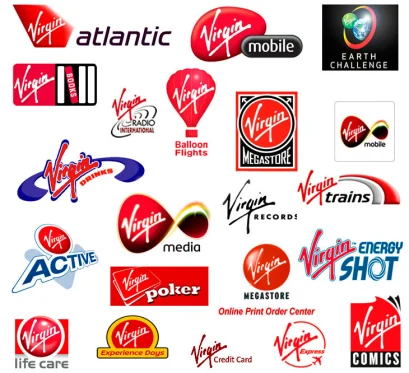 Case Study:
Case Study:
Virgin Group's Umbrella Branding Strategy- Company: Virgin Group, UK
- What Was Done: Virgin Group employs an umbrella branding strategy, covering multiple products and services under the single, recognizable "Virgin" brand name. This strategy spans various industries, including aviation (Virgin Atlantic), telecommunications (Virgin Mobile), hospitality (Virgin Hotels), and more. By using the Virgin name across different sectors, the company leverages its established brand reputation to introduce new products and services efficiently and cost-effectively. A common theme across all Virgin brands is the commitment to "turn the world around for you," emphasizing their dedication to going above and beyond for their clients.
- Results/Impact: Umbrella branding has significantly enhanced Virgin Group's brand equity and customer loyalty. New products benefit from the existing positive brand associations, reducing the time and investment needed for market entry. Customers, familiar with the quality and reliability associated with the Virgin name, are more likely to try new Virgin products. This strategy has allowed Virgin to maintain a strong market presence and quickly expand into diverse sectors. The consistent promise of exceptional service and client care strengthens customer trust and loyalty across all Virgin brands.
- Targeted Efforts: Allows for the alignment of specific marketing activities with the overall business objectives and target audience needs.
- Flexibility and Integration: Encourages flexible strategies that can integrate new trends and tools as they emerge under the marketing umbrella.
Challenges in Managing the Marketing Umbrella
- Coordination Across Channels: Ensuring cohesive messaging and strategies across various marketing disciplines.
- Resource Allocation: Balancing the budget and resources across different marketing activities to maximize ROI.
- Keeping Pace with Change: The marketing landscape is continually evolving, requiring marketers to stay updated with the latest trends and technologies.
The marketing umbrella concept emphasizes the interconnectedness of various marketing disciplines and the need for an integrated approach to effectively reach and engage customers. It highlights the importance of a diverse set of tactics and tools that work cohesively to build brand awareness, drive sales, and foster customer loyalty. As businesses continue to navigate an increasingly complex marketing environment, understanding and leveraging the full spectrum of the marketing umbrella becomes essential for success.

Marketing Plan
A marketing plan is a comprehensive document or blueprint that outlines a company's advertising and marketing efforts for the coming year. It details how a business will reach its target market, attract and retain new customers, and achieve its marketing goals. An effective marketing plan should be structured, strategic, and data-driven, encompassing market research, competitive analysis, and clear objectives.
 Case Study:
Case Study:
Everlane's Transparent Pricing Plan
- Company: Everlane, United States (Founded in 2010)
- What Was Done: Everlane crafted a marketing plan that revolved around radical transparency. They disclosed the cost of materials, labor, and transportation for each product, emphasizing fair pricing and ethical manufacturing processes.
- Results/Impact: This transparency fostered trust and loyalty among consumers, leading to a strong online presence and significant growth. By highlighting the true cost of their products, Everlane not only established a brand identity but also set a new standard in the fashion industry for transparency.
How to create a Marketing Plan:
- Executive Summary: A concise overview of the main goals and recommendations of the plan for quick reference by stakeholders.
- Situation Analysis: Includes current market analysis, SWOT analysis (Strengths, Weaknesses, Opportunities, Threats), and understanding of the competitive landscape.
- Target Audience: Define your primary audience segments in detail, including demographics, psychographics, behavior patterns, and motivations.
- Marketing Goals: Set specific, measurable, achievable, relevant, and time-bound (SMART) goals that align with the overall business objectives.
- Marketing Strategies: Outline the strategies to achieve the goals identified, including the mix of the 7 Ps of Marketing (Product, Price, Place, Promotion, People, Process, Physical Evidence).
- Tactics and Action Plan: Detail the specific actions, channels, and tools you will use to implement your strategies, including digital marketing, content marketing, advertising, public relations, and sales promotions.
 Case Study:
Case Study:
Adobe's Subscription-Based Service Success- Company: Adobe Systems, Global (Founded in 1982)
- What Was Done: Adobe transitioned from selling perpetual software licenses to a subscription-based model with their Adobe Creative Cloud services. Their marketing plan focused on the value of constant updates, cloud storage, and a range of tools accessible under one subscription fee.
- Results/Impact: This shift was met with a positive response from both the individual and enterprise levels, leading to a recurring revenue model that boosted Adobe's market cap to over $200 billion. The Creative Cloud suite has become a staple tool for creatives worldwide.
- Budget: Specify the marketing budget, including a breakdown of costs for different marketing activities and how resources will be allocated.
- Measurement and KPIs (Key Performance Indicators): Establish how success will be measured, including the metrics and KPIs that will be used to evaluate the effectiveness of marketing activities against goals.
- Monitoring and Evaluation: Describe the process for ongoing monitoring and evaluation of the marketing plan’s performance, including regular review meetings and adjustments based on performance data.
- Contingency Planning: Outline potential risks and challenges that could impact the marketing plan and propose contingency measures to address these issues.
A well-crafted marketing plan serves as a roadmap for a business’s marketing activities, ensuring that all efforts are aligned with the company's strategic goals and are executed in a coordinated and measurable way. It should be viewed as a dynamic document that can adapt to changes in the market or business environment, enabling continuous optimization of marketing efforts for maximum impact.

How to Make a Marketing Plan?
Creating a marketing plan involves a structured approach to defining strategies, tactics, and activities that align with your business goals and target audience needs.
Here’s a step-by-step guide on how to make an effective marketing plan:
- Executive Summary: Begin with a brief overview of your plan's key components and objectives, providing stakeholders with a quick snapshot of your marketing strategy.
- Business Overview: Describe your business, including its mission, vision, core values, and unique selling propositions (USPs). Outline your brand's position in the market.
- Market Analysis: Conduct thorough market research to understand your industry's landscape, trends, and dynamics. Include a competitive analysis to identify your competitors' strengths and weaknesses.
- Target Audience: Define your target audience in detail, segmenting the market based on demographics, psychographics, behaviors, and needs. Create buyer personas to represent your ideal customers.
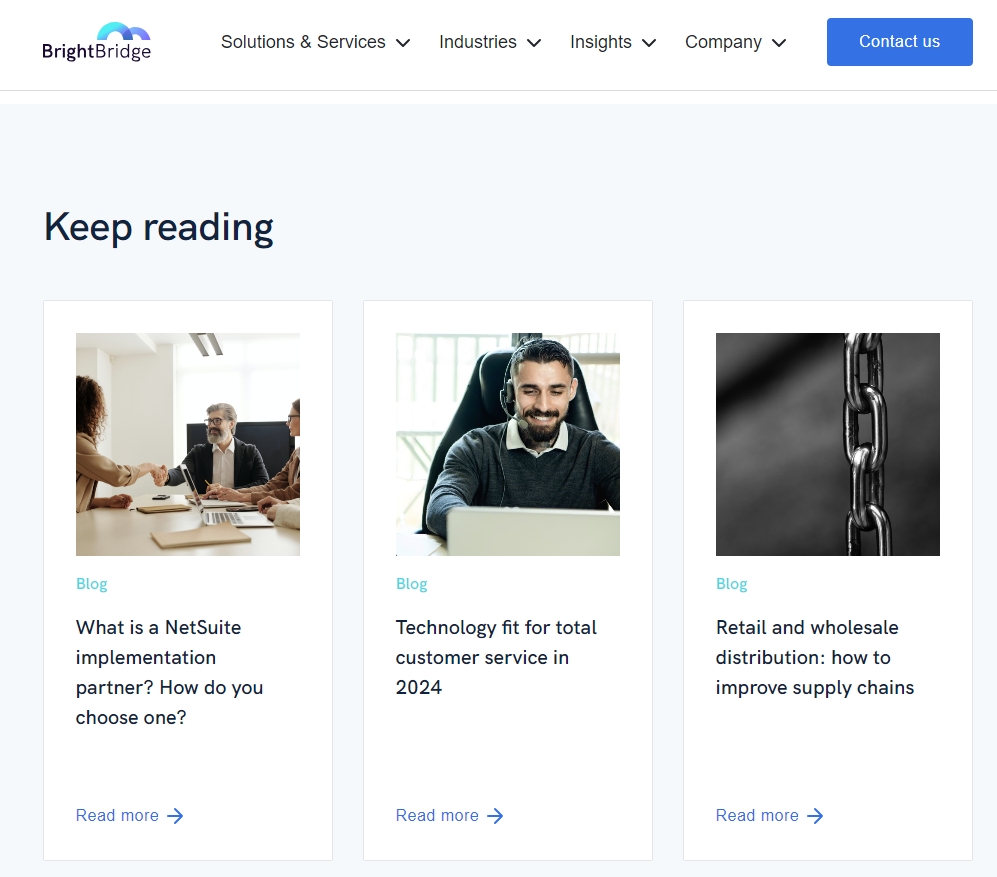 Case Study: Bright Bridge Marketing’s Tailored Plan Development
Case Study: Bright Bridge Marketing’s Tailored Plan Development- Company: Bright Bridge Marketing, Northern Europe (Established 2014)
- What Was Done: The firm developed a marketing plan based on a deep dive into industry-specific trends and client profiling for their consultancy services. They focused on content marketing and strategic networking events to build brand authority.
- Results/Impact: Their targeted approach led to a 50% increase in client acquisition and a 75% client retention rate over three years, demonstrating the value of a well-crafted marketing plan.
- SWOT Analysis: Evaluate your business's Strengths, Weaknesses, Opportunities, and Threats to identify internal and external factors that could impact your marketing efforts.
- Marketing Objectives: Set clear, measurable, achievable, relevant, and time-bound (SMART) marketing objectives that support your overall business goals.
- Marketing Strategies: Develop strategies that leverage your strengths and opportunities to reach your target audience and achieve your objectives. Consider how you'll use the 7 Ps of Marketing (Product, Price, Place, Promotion, People, Process, Physical Evidence) in your strategy.
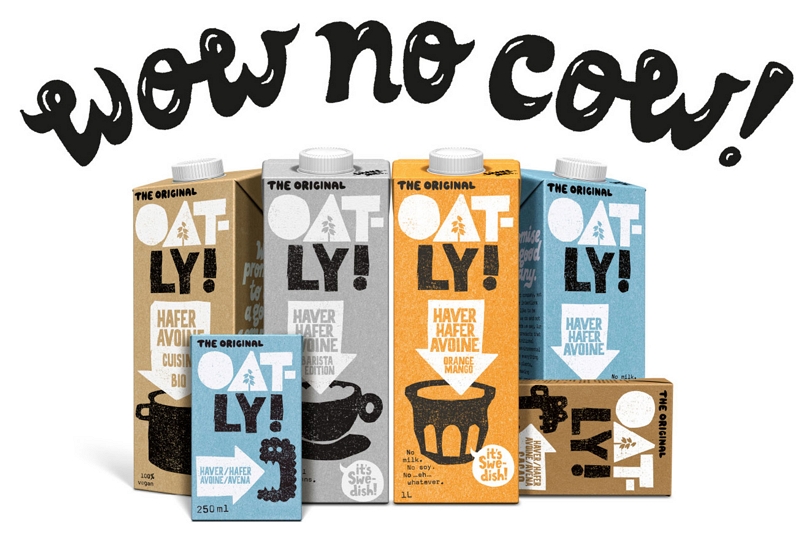 Case Study: Oatly's Alternative Milk Market Disruption
Case Study: Oatly's Alternative Milk Market Disruption- Company: Oatly, Sweden (Founded in 1994, rebranded in 2012)
- What Was Done: Oatly developed a marketing plan that focused on the alternative milk market, using provocative advertising to highlight the benefits of oat milk over traditional dairy. Their plan included engaging with both consumers and baristas to build advocacy.
- Results/Impact: Oatly’s distinctive marketing efforts contributed to its rapid growth in popularity, especially in coffee shops across the United States and Europe, culminating in a successful IPO in 2021.
- Tactics and Action Plans: Detail the specific tactics and actions needed to implement your strategies, including channels, tools, and timelines. Assign responsibilities to team members.
- Budget: Outline a detailed budget that allocates financial resources to your planned marketing activities. Ensure it aligns with your expected return on investment (ROI).
- Measurement and KPIs: Identify key performance indicators (KPIs) and metrics to measure the success of your marketing activities. This could include website traffic, lead generation, conversion rates, and customer acquisition costs.
- Monitoring and Evaluation: Establish a process for regularly reviewing and assessing the performance of your marketing activities against your KPIs. Be prepared to adjust your plan based on performance data and market changes.
- Contingency Plan: Develop contingency plans for potential risks or challenges that could impact your marketing strategy. This ensures you can respond quickly to unforeseen circumstances.
 Case Study: Grammarly's Writing Enhancement Marketing Blueprint
Case Study: Grammarly's Writing Enhancement Marketing Blueprint
- Company: Grammarly, United States (Founded in 2009)
- What Was Done: Grammarly developed a marketing plan that capitalized on content marketing and SEO to reach potential users. They provided value through their online grammar checking tool, which acted as a lead magnet for their premium services.
- Results/Impact: Grammarly's user base expanded rapidly, with millions of users adopting the tool. The effective use of SEO and content marketing solidified Grammarly’s position as one of the leading online writing assistance tools in the market.
An effective marketing plan is dynamic, and should be reviewed and updated regularly to reflect changes in the market, customer behavior, or business objectives. It serves as a roadmap, guiding your marketing efforts and ensuring they are focused, strategic, and aligned with your business's overall goals.

Segmentation
Segmentation in marketing is the process of dividing a broad consumer or business market into sub-groups of consumers (known as segments) based on some type of shared characteristics. This approach allows marketers to tailor their strategies to specific groups more effectively than targeting the entire market with a one-size-fits-all strategy.
 Case Study: Apple's Market Segmentation using Price Differentiation
Case Study: Apple's Market Segmentation using Price Differentiation
- Company: Apple, Cupertino, California, USA (Established in 1976)
- What Was Done: Apple’s product lineup includes options like the iPhone SE, an affordable choice for budget-conscious consumers, and the iPhone Pro, which caters to users seeking premium features and performance. This segmentation strategy extends across all product lines, from the entry-level iPad to the high-end iPad Pro, and from the basic MacBook Air to the powerful MacBook Pro. Each product tier is designed to meet specific user requirements, ensuring that Apple’s offerings appeal to a broad audience.
- Results/Impact: This strategic approach has enabled Apple to capture a substantial share of the smartphone, tablet, and laptop markets. By catering to different segments, Apple has maintained a loyal customer base and ensured continuous growth. The variety in their product range allows customers to find a device that fits their budget and needs, reinforcing brand loyalty and driving repeat purchases.
Here’s a closer look at segmentation, its importance, and how it’s used in marketing:
Types of Market Segmentation
- Demographic Segmentation: Divides the market based on demographic factors such as age, gender, income, education, and family size. It’s one of the simplest and most widely used forms of segmentation.
- Geographic Segmentation: Segments the market based on geographic boundaries. This can range from broad categories like countries or regions to more specific ones like cities or neighborhoods.
- Psychographic Segmentation: Involves dividing the market based on lifestyle, personality traits, values, opinions, and interests of consumers.
- Behavioral Segmentation: Segments consumers based on their behavior, usage and decision-making patterns including benefits sought, purchase frequency, brand loyalty, and user status.
Importance of Segmentation
- Enhanced Targeting: Segmentation allows marketers to target specific groups of consumers with messages that are more relevant to their specific needs, preferences, and behaviors.
- Increased Efficiency: By focusing on the segments most likely to purchase a product, companies can allocate their resources more efficiently, thereby increasing the effectiveness of their marketing efforts.
- Competitive Advantage: Segmentation helps businesses identify niches that are underserved or not served at all, providing opportunities to offer products and services that meet these unique needs.
 Case Study:
Case Study:
PetitePaws Pet Supplies Targets Niche Market- Company: PetitePaws Pet Supplies, a provider of pet products specifically for small breeds, San Francisco, California
- What Was Done: Recognizing a niche market, PetitePaws segmented its marketing efforts to cater exclusively to owners of small breed dogs and cats. The company utilized targeted social media ads, collaborated with influencers within the small pet community, and sponsored events like small breed dog meetups.
- Results/Impact: By focusing on this specific segment, PetitePaws not only carved out a unique position in the crowded pet supply market but also saw a 60% increase in year-over-year sales. This success underscores the effectiveness of market segmentation in identifying and capitalizing on niche markets.
- mproved Customer Retention: Tailoring products and marketing messages to meet the needs of specific segments can improve customer satisfaction and loyalty.
Strategies for Effective Segmentation
- Research and Data Analysis: Conduct market research and use data analytics to identify meaningful and measurable segments.
- Segment Identification: Determine the most viable segments based on size, accessibility, profitability, and alignment with the company’s objectives.
- Targeting: Select one or more segments to target based on the company’s resources, goals, and the competitive landscape.
- Positioning: Develop a positioning strategy for each targeted segment, highlighting the unique value proposition tailored to the segment’s needs.
Challenges in Segmentation
- Data Overload: Collecting and analyzing the vast amount of data required for effective segmentation can be overwhelming and expensive.
- Segment Overlap: Overlapping segments can complicate marketing strategies and dilute the effectiveness of targeted campaigns.
- Dynamic Markets: Consumer preferences and market conditions can change rapidly, requiring ongoing adjustment of segmentation strategies.
The Future of Segmentation
- Advancements in technology, particularly in big data analytics and artificial intelligence, are making segmentation more sophisticated and dynamic. Marketers now have the tools to perform micro-segmentation, identifying very specific niches within the market. Additionally, the rise of personalization and one-to-one marketing strategies suggests that future segmentation may evolve to focus on individual consumer behavior and preferences even more closely.
In conclusion, segmentation is a foundational element of effective marketing that enables businesses to understand and cater to the specific needs of different groups within a larger market. By employing strategic segmentation, companies can enhance their targeting precision, optimize their marketing resources, and build stronger connections with their customers.
Marketing Strategy and Consulting
Interested in getting help with your marketing efforts and marketing strategy?
Contact us: info@zooz.co.il ,+972-9-958-5085
Marketing Articles
- Marketing Overview
- Marketing Goals
- Marketing Metrics
- Marketing Types
- Marketing Channels
- Demographic Marketing
- Marketing Business Models
- Industry-Specific Marketing
- Professional Services Marketing
- Marketing Strategy
- Market Research
- Marketing Communications (MarCom)
- Marketing Execution
- Makreting Careers
- Marketing Education
- Marketing Glossary (200 terms)
- Marketing Versus Other Disciplines
- Marketing Agencies and Outsourcing





